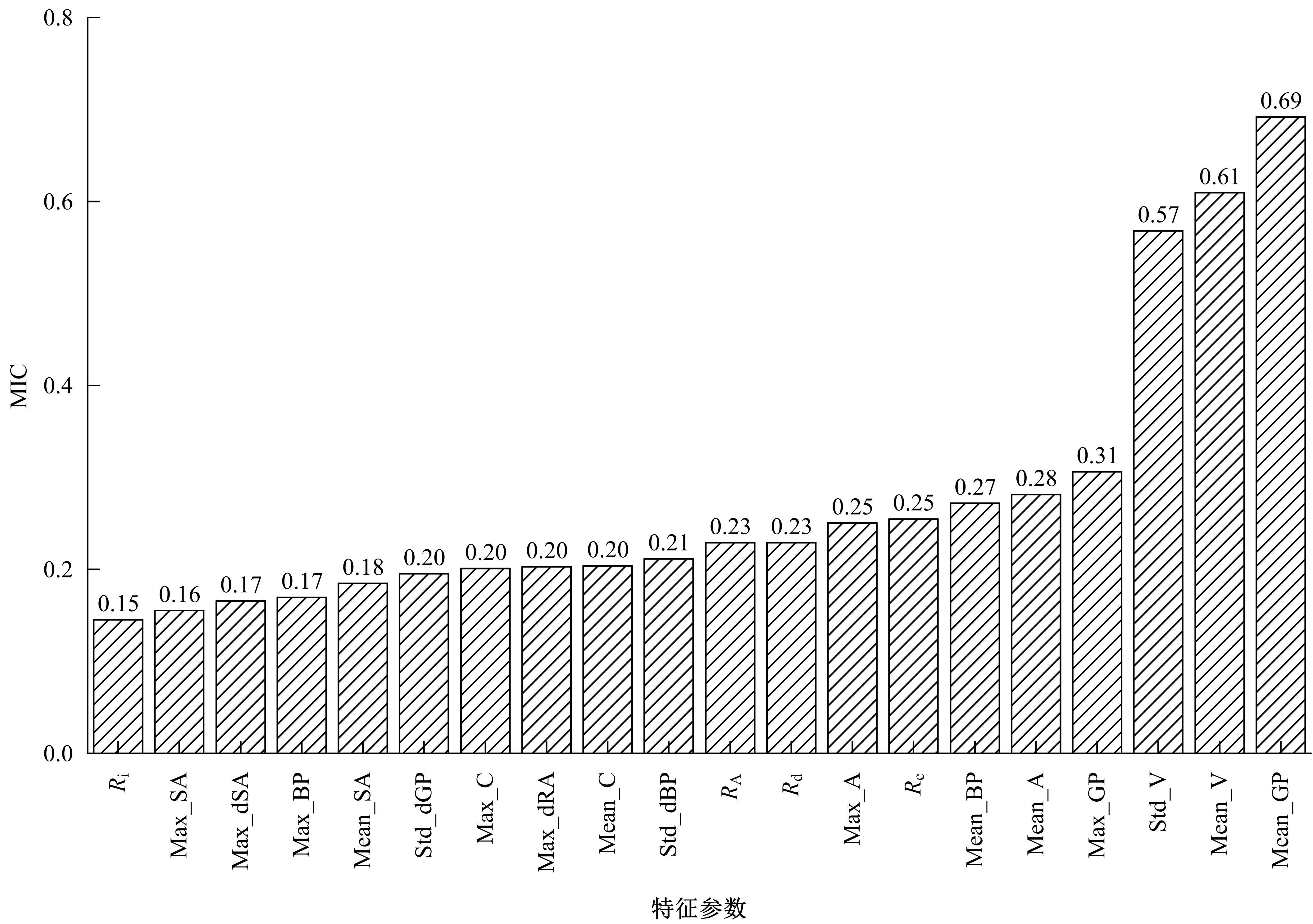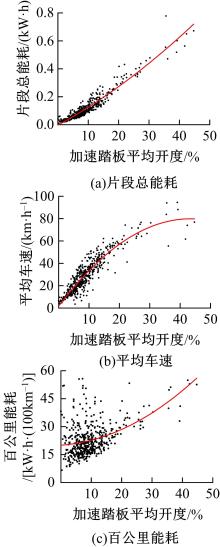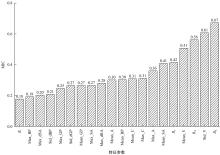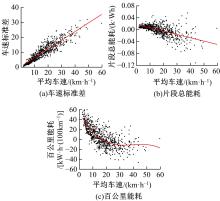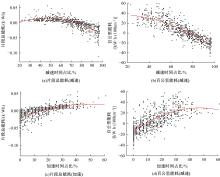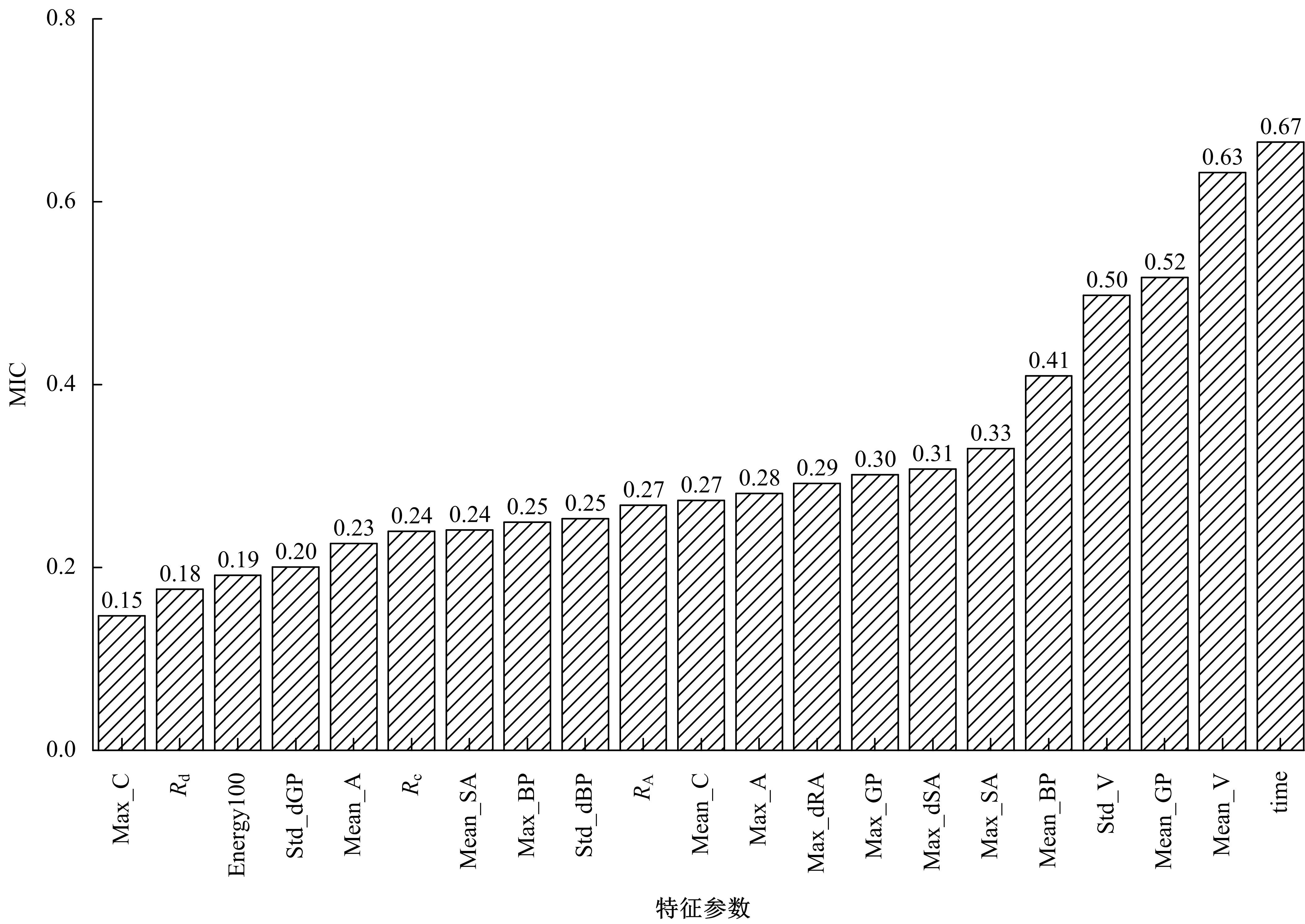Journal of Jilin University(Engineering and Technology Edition) ›› 2022, Vol. 52 ›› Issue (4): 754-763.doi: 10.13229/j.cnki.jdxbgxb20210172
Influence of driving behavior on energy consumption of pure electric shared vehicles
Shao-bo JI1( ),Yang LI1,Meng LI1,Shi-bin SU2,Xiao-long MA2,Shao-qing HE3,Guo-rui JIA3,Yong CHENG1
),Yang LI1,Meng LI1,Shi-bin SU2,Xiao-long MA2,Shao-qing HE3,Guo-rui JIA3,Yong CHENG1
- 1.School of Energy and Power Engineering,Shandong University,Jinan 250061,China
2.Hisense Trans Tech Co. ,Ltd. ,Qingdao 256000,China
3.China Automotive Technology and Research Center Co. ,Ltd. ,Tianjin 300300,China
CLC Number:
- U471.15
| 1 | Chen Si-cong. On the relationship between energy consumption and driving behavior of electric vehicles based on statistical features[C]∥Chinese Control Conference, Guangzhou, China,2019: 730-735. |
| 2 | Han Q, Hu X, He S, et al. Evaluate good bus driving behavior with LSTM[C]∥The 5th International Conference on Internet of Vehicles Technologies and Services Towards Smart City. Paris, France: Springer International Publishing, 2018:122-32. |
| 3 | Larusdottir E B, Ulfarsson G F. Effect of driving behavior and vehicle characteristics on energy consumption of road vehicles running on alternative energy sources[J]. International Journal of Sustainable Transportation, 2015, 9(8): 592-601. |
| 4 | 魏涛. 车联网环境下汽车节能驾驶行为与速度优化方法研究[D]. 西安: 长安大学信息工程学院, 2019. |
| Wei Tao. Research on energy-saving driving behavior and speed optimization method of vehicles in internet of vehicles environment[D]. Xi'an: School of Information Engineering, Chang'an University, 2019. | |
| 5 | 王萍,万蔚,张克, 等.出租车驾驶员生态驾驶行为评价[J]. 交通工程,2018,18(6):41-44, 50. |
| Wang Ping, Wan Wei, Zhang Ke, et al. Evaluation of low energy consumption driving behavior of taxi drivers[J]. Journal of Transportation Engineering, 2018, 18(6): 41-44, 50. | |
| 6 | 赵晓华, 陈晨, 伍毅平, 等. 出租车驾驶员驾驶行为对油耗的影响及潜力分析[J].交通运输系统工程与信息,2015,15(4):85-91. |
| Zhao Xiao-hua, Chen Chen, Wu Yi-ping, et al. The effect and potential study of eco-driving on taxi fuel consumption [J]. Journal of Transportation Systems Engineering and Information Technology, 2015,15(4):85-91. | |
| 7 | 李萌. 基于车辆运行数据的驾驶能耗及驾驶风格分类分析[D]. 济南: 山东大学能源与动力工程学院, 2020. |
| Li Meng. Classification analysis of driving energy consumption and driving style based on vehicle running data[D]. Ji'nan: School of Energy and Power Engineering,Shandong University, 2020. | |
| 8 | 李熙,冯拔,谢勇波,等. 基于决策树的司机驾驶行为研究[J]. 控制与信息技术,2019, 41(5):17-20, 26. |
| Li Xi, Feng Ba, Xie Yong-bo, et al. Study on driver driving behavior based on decision tree[J]. Control and Information Technology, 2019, 41(5): 17-20, 26. | |
| 9 | 李佩,彭斯俊. 一种新的组合权重在组合预测模型中的应用[J].河南科技大学学报: 自然科学版,2018,39(2):87-93, 98. |
| Li Pei, Peng Si-jun. Application of a new combination weight in combination prediction model[J]. Journal of Henan University of Science and Technology(Natural Science), 2018, 39(2):87-93, 98. | |
| 10 | 张长聪,刘庆华,刘根,等. 基于改进灰色关联分析的雷达费用驱动因子选取方法[J]. 兵器装备工程学报,2019,40(8):130-135. |
| Zhang Chang-cong, Liu Qing-hua, Liu Gen, et al. Selection method of radar cost driver based on improved grey correlation analysis[J]. Journal of Ordnance Equipment Engineering, 2019, 40(8): 130-135. | |
| 11 | 刘震,党耀国,周伟杰, 等. 新型灰色接近关联模型及其拓展[J].控制与决策,2014,29(6):1071-1075. |
| Liu Zhen, Dang Yao-guo, Zhou Wei-jie, et al. New ggrey nearness incidence model and its extension[J]. Control and Decision, 2014, 29(6): 1071-1075. | |
| 12 | Reshef D N, Reshef Y A, Finucane K H, et al. Detecting novel associations in large data sets[J]. Science, 2011, 334(6062): 1518-1524. |
| 13 | 王文广,王朔,赵文杰. 基于最大信息系数变量选择的电站锅炉NO x 排放量在线预估[J]. 华北电力大学学报: 自然科学版,2019,46(6):66-72. |
| Wang Wen-guang, Wang Shuo, Zhao Wen-jie. On-line estimation of NO x emissions from power plant boilers based on variable selection of maximum information coefficient[J]. Journal of North China Electric Power University(Natural Science Edition), 2019, 46(6): 66-72. | |
| 14 | 靳冰洁,张步涵,姚建国,等. 基于信息熵的大型电力系统元件脆弱性评估[J].电力系统自动化,2015,39(5):61-68. |
| Jin Bing-jie, Zhang Bu-han, Yao Jian-guo, et al. Vulnerability assessment of large power system components based on information entropy[J]. Automation of Electric Power Systems, 2015, 39(5): 61-68. | |
| 15 | 尹世庄,王韬,谢方方,等. 基于互信息和轮廓系数的聚类结果评估方法[J].兵器装备工程学报,2020,41(8):207-213. |
| Yin Shi-zhuang, Wang Tao, Xie Fang-fang, et al. Clustering result evaluation method based on mutual information and contour coefficient[J]. Journal of Ordnance Equipment Engineering, 2020, 41(8): 207-213. |
| [1] | Jin XU,Cun-shu PAN,Jing-hou FU,Jun LIU,Dan-qi WANG. Speed behavior characteristic on typical driving scenarios and along switched scenarios [J]. Journal of Jilin University(Engineering and Technology Edition), 2021, 51(4): 1331-1341. |
| [2] | Ping WAN,Chao-zhong WU,Xiao-feng MA. Discriminating threshold of driving anger intensity based on driving behavior features by ROC curve analysis [J]. Journal of Jilin University(Engineering and Technology Edition), 2020, 50(1): 121-131. |
| [3] | Liang JIANG,Yi HE. Risky driving behavior and influencing factors analysis for electric two⁃wheeler [J]. Journal of Jilin University(Engineering and Technology Edition), 2019, 49(4): 1107-1113. |
| [4] | WAN Ping, WU Chao-zhong, LIN Ying-zi, MA Xiao-feng. Driving anger detection based on multivariate time series features of driving behavior [J]. 吉林大学学报(工学版), 2017, 47(5): 1426-1435. |
| [5] | WANG Hai-wei, WEN Hui-ying, LIU Min. Experimental evaluation of nighttime driver's physiological characteristics in driving simulator [J]. 吉林大学学报(工学版), 2017, 47(2): 420-428. |
| [6] | GUO Ying-shi, FU Rui, ZHAO Kai, MA Yong, YUAN Wei. Evaluation and test of real-time identification models of driver's lane change intention [J]. 吉林大学学报(工学版), 2016, 46(6): 1836-1844. |
| [7] | WANG Zhe, YANG Bai-ting, LIU Xin, LIU Qun, SONG Xian-min. Discriminant analysis of driving decisions based on fuzzy clustering [J]. 吉林大学学报(工学版), 2015, 45(5): 1414-1419. |
| [8] | ZHANG Bo, WANG Wen-jun, WEE Minkooc, CHENG Bo. Detection handheld phone use by driver based on machine vision [J]. 吉林大学学报(工学版), 2015, 45(5): 1688-1695. |
| [9] | SUN Zhi-yong, SUN Xiao-duan. Gap acceptance of merging in expressway work zone [J]. , 2012, (06): 1470-1474. |
| [10] | GUO Zi-zheng, CHEN Chong-shuang, YAN Wei, SONG Wei, ZHANG Zhi-yong. Assessment method for driving threat perception [J]. 吉林大学学报(工学版), 2012, 42(01): 46-50. |
| [11] | REN Wan-Wan, LI Xian-Sheng, XI Jian-Feng. Multidimensional structural model of risk on driving behavior decisionmaking [J]. 吉林大学学报(工学版), 2011, 41(02): 343-0348. |
| [12] | GUO Zi-Zheng, CHEN Chong-Shuang, WANG Xin, CHEN Ya-Qing, TAN Yong-Gang. Driving behavior risk status identification |model based on FCM [J]. 吉林大学学报(工学版), 2010, 40(02): 427-0430. |
| [13] | PEI Yu-Long, MA Yan-Li. Effects of driver fatigue on his sense, judgement and operation behavior [J]. 吉林大学学报(工学版), 2009, 39(05): 1151-1156. |
| [14] | SHI Shu-ming, JIN Li-sheng, WANG Rong-ben, TONG Bing-liang. Driver mouth monitoring method based on machine vision [J]. 吉林大学学报(工学版), 2004, (2): 232-236. |
|
||



